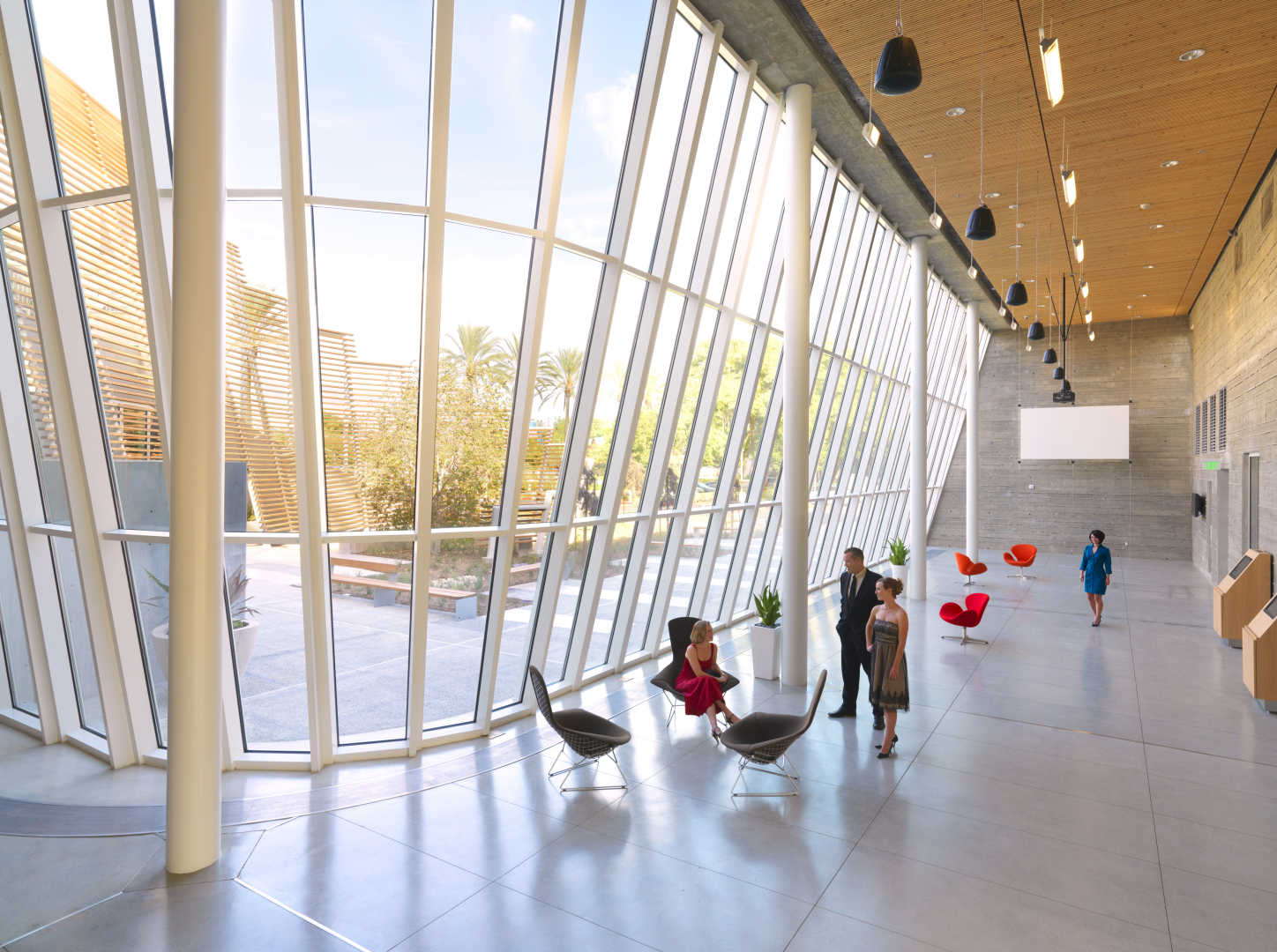Buildings are responsible for 40% of total energy consumed in the US, 70% of all electricity and over 1/3 of all greenhouse gases, so with those statistics, it’s imperative that architects look towards a future that attempts to reduce those numbers. A sustainable approach to this problem would be to lower the quantity of electricity needed to power a building, but as well-intentioned as it may be, this is a flawed approach, as it will only work on lessening the consumption, rather than eliminating or offsetting it altogether. This is the overarching problem with sustainable approaches. The future of renewable architecture, the future we’re now working towards, has a more eco-friendly approach, which adopts the conservation framework of sustainability, but furthermore seeks to replenish the resources it draws from.
The Adoption of Renewability over Sustainability
While sustainable design practices work to reduce the consumption of finite resources, they don’t restore or renew them. This means that over time, that resource goes into deficit and is eventually extinguished. At HMC Architects, we make it a priority to restore, renew, and revitalize resources for the communities of tomorrow through regenerative design practices. The question is when the industry as a whole will make the leap towards greater renewability, and we believe that is when on-site renewability becomes affordable and when the technology is readily available and simple enough that anyone can implement it.
Hurdles to Overcome to Achieve Renewability
While most people can see the benefits of adopting renewable architecture strategies, there are a few hurdles that currently keep them from being easily implemented. On-site renewables are challenged by a utility company’s cheap off-site renewable energy offerings. For example, during some months, California overproduces electricity and exports it to Arizona or Nevada. This practice undermines a project that is seeking to be a net positive, as they are not compensated by utility companies for the over-production of energy.
It’s currently difficult for on-site renewable energy operations to be resilient, as many utility companies block renewables from operating in a blackout, and offer no emergency support to these private entities in times of crisis. Utility companies also shift peak demand rates from midday to late evening because of surplus daytime generation, and as a result, this charges people, not corporations, for energy use. In order to move past these hurdles, we’ll need to take a hard look at the current operating procedures for utility companies, and hopefully, come to an understanding of the benefits that a renewable system offers everyone.
Renewable Architecture Solutions
Making enough energy to support the building is the baseline for renewable architecture, but creating a surplus that can be used by others is the greater goal. How we deal with this excess energy, and how that works with our current infrastructure is the challenge that society is facing. Some of the current trends of renewability are utilizing the following techniques:
- Battery or Grid Level Storage. Harnessing solar or wind is a great solution for energy needs, but being able to store it for later use, whether that be in on-site battery banks or sending the excess back to the grid, is a way to make that harnessed energy go even further.
- Microgrid. This option takes a site that is generating electricity and has a self-contained system, allowing them to operate independently of the larger power grid.
- Smart Grid. Our current grid was built up when homes didn’t have near as much of an electrical demand as they do now. By taking steps to upgrade the current system to utilize a give-and-take method of energy transfer, we’re adapting to the current world, as well as looking towards future demand.
- Utility Decentralization. All of the aforementioned systems are building blocks for a decentralized utility program. A couple of the most promising modernization techniques for decentralization and updating the grid is with blockchain, as well as resonance energy transfer, which has the opportunity to open up wireless power options.
We believe that the biggest upcoming trend in renewability is going to be in this blockchain concept, and resonance energy transfer, which eliminates unnecessary transaction costs that occur in the power plant systems. By being able to trade excess energy with facilities that need it, we open up all sorts of possibilities in how the entire power grid system works.
 HMC’s Role in Utilizing Renewable Architecture
HMC’s Role in Utilizing Renewable Architecture
At the County of San Diego North Coastal Live Well Health Center in Oceanside, California, we set out to create a Zero Net Energy building, which means that all energy consumed by the building has to be generated on-site. In order to meet this tall order, we had to make sure that all design decisions were supporting this endeavor. The result was a building that is powered entirely by the sun, with features such as large, operable windows with integrated shade sails, which allows for plenty of natural daylight, while reducing glare and mitigating solar heat gain.
 The Frontier Project in Rancho Cucamonga, California had the goal of increasing awareness of alternative building methods and materials, to encourage consumers, builders, and sustainable advocates to incorporate renewable architecture into future projects. The project has been a great success, operating as a demonstration project that implements Southern California’s best practices for energy and water conservation.
The Frontier Project in Rancho Cucamonga, California had the goal of increasing awareness of alternative building methods and materials, to encourage consumers, builders, and sustainable advocates to incorporate renewable architecture into future projects. The project has been a great success, operating as a demonstration project that implements Southern California’s best practices for energy and water conservation.



